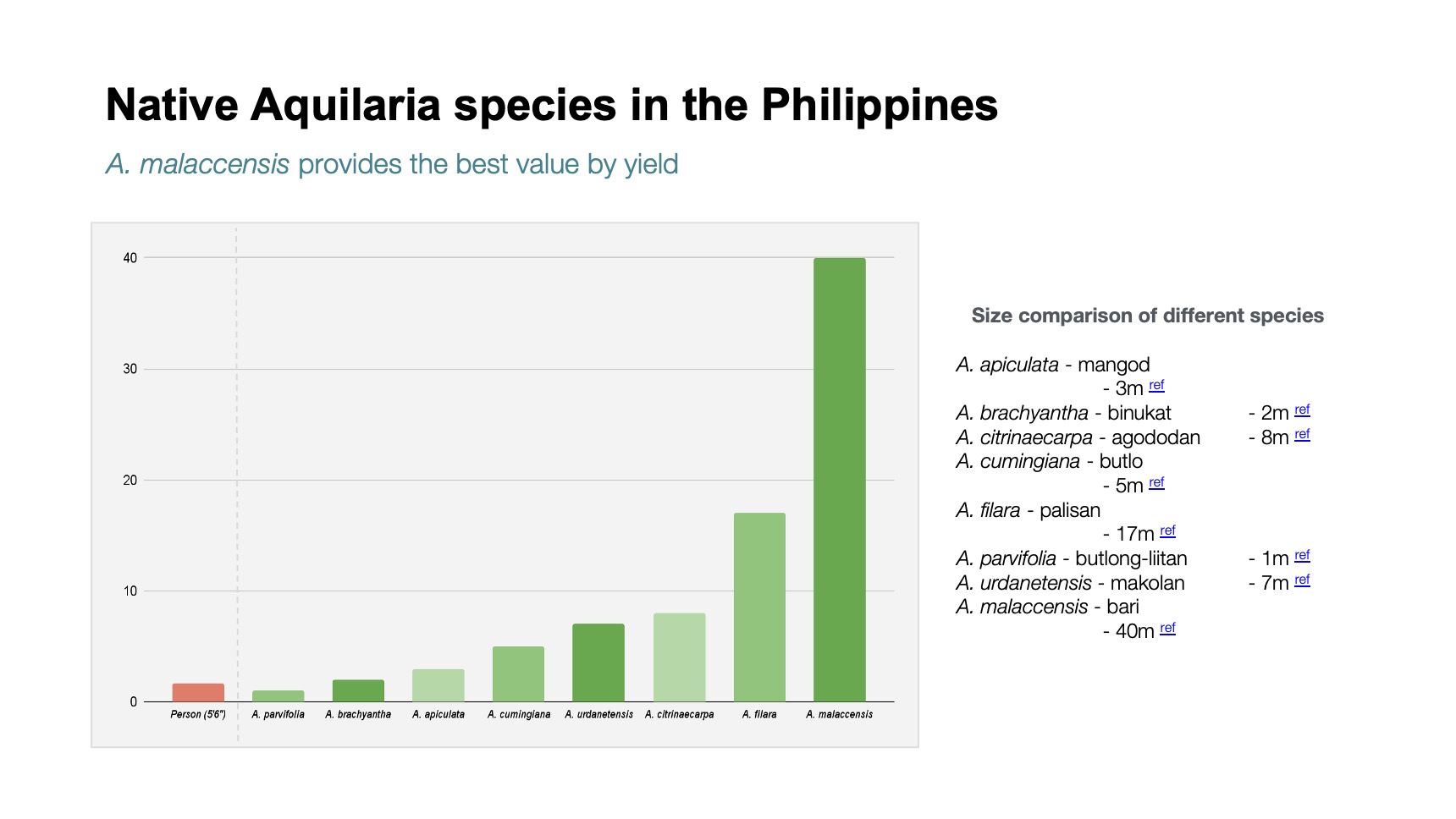Agarwood (also known as aloeswood or eaglewood) normally refers to dense, heavy and fragrant resinous wood which is formed in the trees of Aquilaria, Gonystylus and Gyrinops. According to Swee (2008), the term ‘agarwood’ refers to resin-impregnated pieces of wood that have been at least partially shaved from the non-impregnated woods.
Agarwood is considered to be the finest natural incense and has been used in many communities to fulfil cultural, religious and medicinal purposes for centuries. It is known by many names; it is called ‘gaharu’ in Indonesia and Malaysia, ‘jin-koh’ in Japan, ‘chen hsiang’ or ‘chenxiang’ in China, ‘agar’ in India (from Sanskrit ‘aguru’), ‘chim-hyuang’ in Korea, ‘kritsana noi’ in Thailand, ‘tram huong’ in Vietnam, ‘bols d′agle’, ‘bols d′aloes’, ‘calambac’ or ‘calambour’ in French and ‘oud’ in the Middle East (Burkill, 1935, Ng et al., 1997, Sidiyasa, 1986). Previously, at least in the Malay language, the agarwood tree was known as ‘karas’ or ‘kekaras’, whereas ‘gaharu’ referred to heavy fragrant wood (Burkill, 1935). However, current practice uses ‘gaharu’ as the generic term to refer to both the tree and its resin, similar to the term ‘agarwood’.
The economic interest in agarwood has always been directed towards its pathological heavy and dense resin-impregnated wood, which is formed in the tissues of the stem in response to injury. Briefly, the resin could develop through pathological, wounding and non-pathological mechanisms (Ng et al., 1997). These mechanisms have been the basis for inoculation or induction techniques to induce resin formation in cultivated agarwood trees, where the techniques often involve physical penetration into the trunk (wounding), insertion of a microbial (mainly fungal) concoction (pathology) and response of the tree towards the administered stress (non-pathological). A method of producing agarwood resin by creating an artificial wound in the xylem of agarwood trees have been patented (Blanchette and van Beek, 2005).
The fragrant wood has many ties with cultures around the world, such as the Arabian, Chinese and Japanese cultures, and is also associated with religious history, rituals and ceremonies in Buddhism, Christianity, Hinduism, and Islam (Barden et al., 2000). Nevertheless, other materials from the agarwood plant have also found prominent uses in the traditional medicine practices of the Southeast Asian communities, such as Chinese, Tibetan, Unani and Ayurvedic medicines (Barden et al., 2000, Blanchette and van Beek, 2005). This ethnopharmacological evidence, together with the current trends in bioprospecting, have spurred the interest of the scientific community to investigate claims using modern tools.
The diminishing number of these trees in the wild due to indiscriminate felling in search of the resin has led to conservation actions by listing the genus Aquilaria in Appendix II of Convention on International Trade in Endangered Species of Wild Fauna and Flora (CITES) (UNEP-WCMC (Comps.), 2014). The International Union for Conservation of Nature and Natural Resources (IUCN) Red List of Threatened Species has listed Aquilaria crassna as critically endangered, and Aquilaria malaccensis and Aquilaria sinensis are listed as vulnerable (Asian Regional Workshop (Asian Regional Workshop Conservation and Sustainable Management of Trees, 1996)). In response to this situation, sustainable agarwood planting and management with artificial induction of agarwood resin formation have been implemented. This has led to a ready supply of different parts of the agarwood plant, which provides opportunities for the development of a range of value added products.

